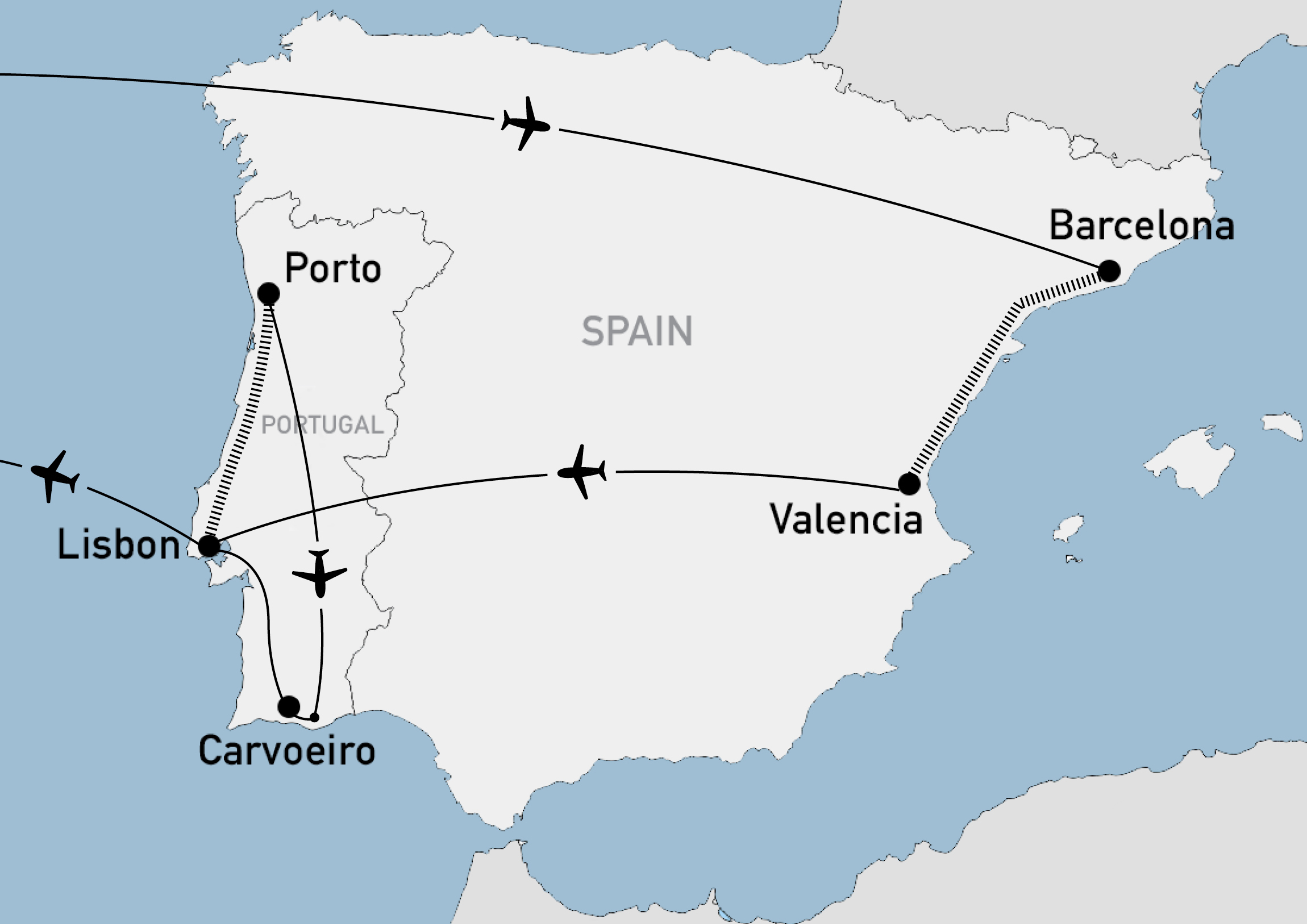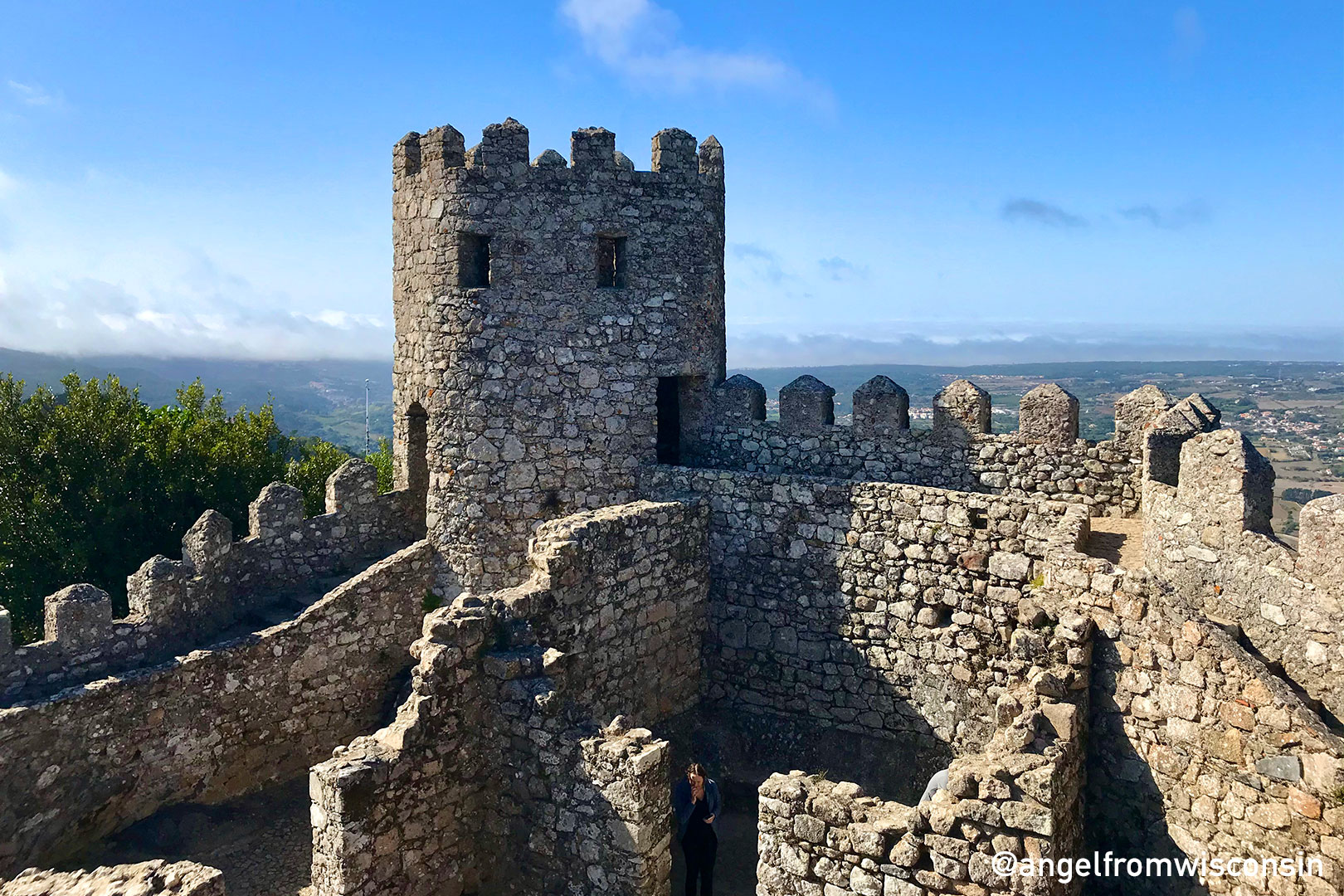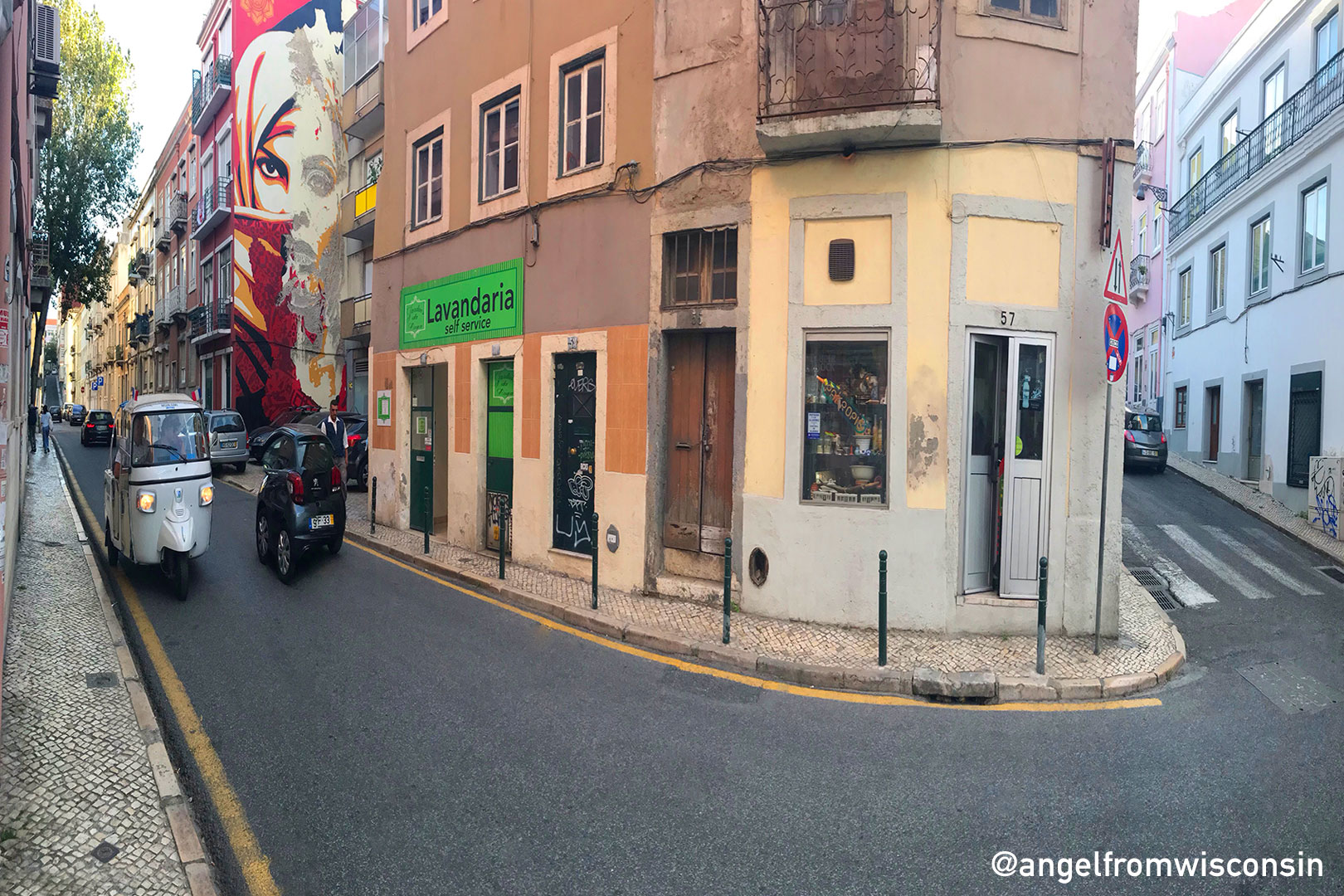Douro Valley, Portugal
10.03.2019
Just outside of Porto is the oldest wine region in the world, the Douro Valley. Also a UNESCO World Heritage Site, this region produces the grapes used for Portugal’s world renown Port wine.
Now, I like to drink wine but I know little to nothing about it. Even so, one glimpse of this valley put it at the top of my “must-see” list in Portugal. The Douro River carves a deep path through rolling hills and farmers created terraces and planted rows of grape vines on the hills. This collaboration between nature and farmer results in jaw dropping scenery worthy of a day trip.

After exhausting myself trying to research the best way to explore this region let me save you the trouble by telling you it is by group tour with hotel pickup and drop-off.
I booked a ticket for $125 through Get Your Guide which included a local guide, transportation via passenger van, a river cruise, two wine tastings paired with local honey, bread, and olive oil, and a hot, sit-down lunch with a view! We left the city around 9 a.m. and got back around 5 p.m. and it was one of our best days. Everything was beautiful and planned out for us, our guide was great, our travel companions were fun, and all we had to do was enjoy ourselves.

The drive out to the Douro Valley is beautiful. Shortly after leaving the city of Porto the highway takes you high over deep valleys via a network of astonishing bridges that connect each hillside. Along with awesome bridges, a common theme in Porto, there is a five kilometer tunnel which takes you straight through a mountain and the iconic terraced hillsides start to make an appearance when you emerge on the other side.
Shortly after going through the tunnel our guide stopped at a local coffee shop to allow us to grab a beverage, walk across a footbridge, and take pictures before hopping back in the van and onto the historic highway that flows along the Douro River. The river is slow and deep and the terraced hillsides were all around us as we arrive at our first destination, Pinhao. Immediately upon arrival we boarded a modified Rabelo boat for our river boat cruise which is where we really got to drink in the views!




Aboard a boat, what is there to do but drink wine and look around? Take pictures of course!
The quiet little boat glided past some of the most beautiful terraced hill vineyards and every tourist aboard played musical chairs, taking turns to get pictures. The boat ride was less than an hour long and I drank in every field, fence, and cloud. We arrived back to the dock much too soon. Our next stop took us up switchback roads to an old olive oil mill where we receive a tour, wine tasting, and local snacks.


This old mill had the best view which we could fully enjoy from the balcony where our wine tasting took place. We sampled white, rose, and red wine accompanied with local honey, oil and bread. All was delicious and we lingered on the balcony for over an hour before going back down the switchbacks to our next destination, lunch.


The wine certainly was making us hungry and chatty and, after getting stuck behind a farm truck loaded with fresh picked grapes, we reached our hilltop destination for lunch. The place turned out to be a converted winery where a few guests could stay, tourist could eat, and Port Wine could be sampled. Our dinner experience took place outside under a walnut tree with a view of the valley and the river sparkling below. Our group of five sat around a big round table where we were served the preselected meal of our choice. And wine. Of course, they served us more wine! Plus, we were served our first taste of Port wine with our unidentifiable Portuguese dessert square. We were all quite giddy at this point and dinner was a wonderful affair where we learned more about our Australian tour partners.


After dinner we retained our Port wine glasses and moved into the tasting dugout where we learned about the process, grades, and flavors of Port wine. We sampled a five year, ten year, and thirty year Port wine and each taste became sweeter and thicker as the age increased. As an added bonus, they passed around a glass of Port from 1893 for us to swirl and smell, but not drink. The bottle could be purchased for 3,000 euros or a tasting sample for 300 euros. We all opted for the free smell of the thick, dark liquid.

With our tour of the Douro Valley coming to an end we wandered back to the van to find our tour guide taking a siesta in the front seat, a common Portuguese tradition after a meal. The funny part was everybody else took a siesta in the van on the way back to Porto, a natural effect of all the wine. My siesta was only a minute or so long because I was fighting it hard, wishing to take in the amazing bridge and valley views again on the way back.
As a bonus, our tour guide took us to his favorite lookout in the city of Porto, which was near a small, simple church that no tourist would find. We parked under an olive tree that was dropping olives on the cobble lot before getting out of the van to enjoy the view. Our guide pointing out buildings near and far including an old sardine factory being converted into a hostel, a yellow museum on Gaia, and a house with a garden and pecking chickens. It was a great way to complete an amazing day that met every expectation.



